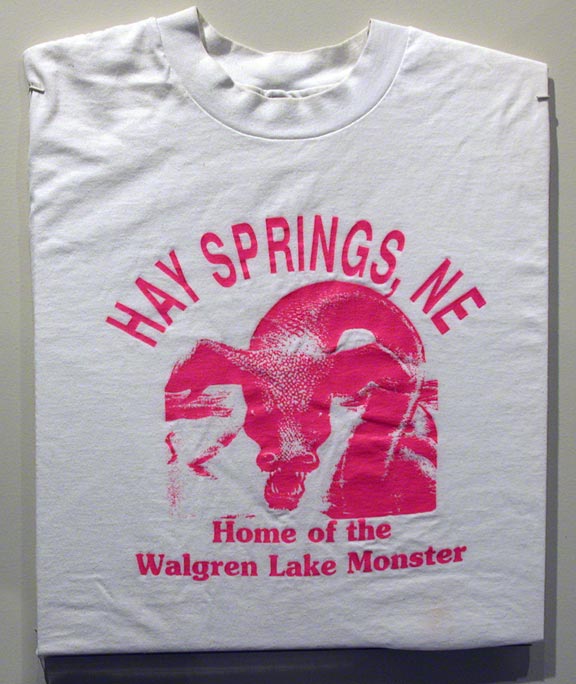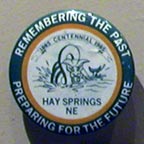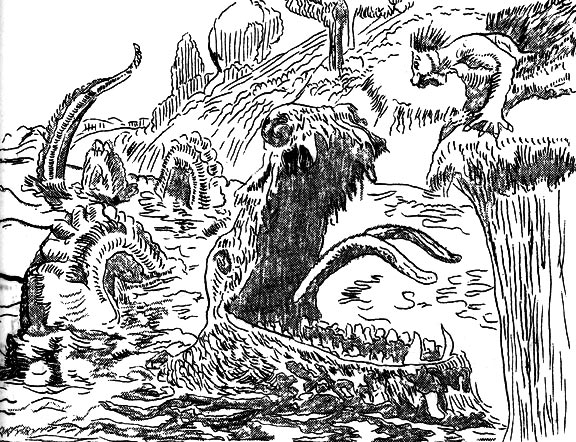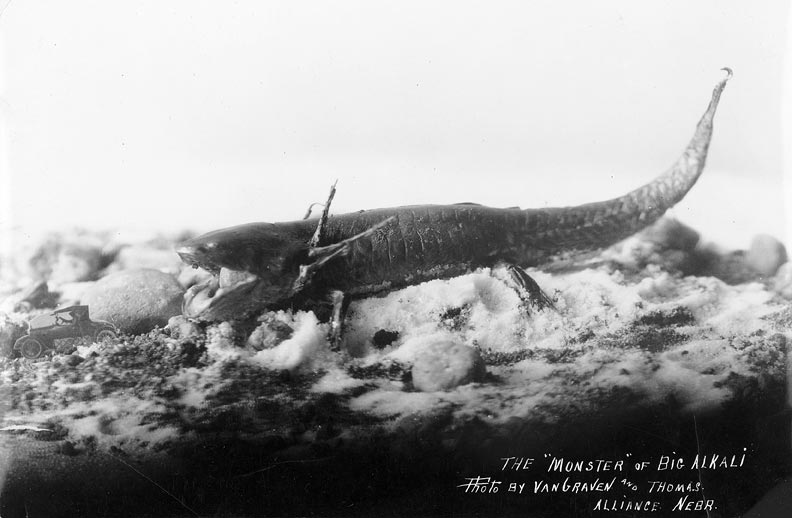Walgren Lake (formerly Alkali Lake) near Hay Springs, Nebraska has long been the purported home of an elusive “sea monster.” Descriptions range from a “roaring, devastating sea reptile” that came on land to devour cows, horses, and cornfields, to a giant with flashing green eyes that spit fire, with a head like a huge oil barrel. Colonel John G. Maher of Chadron, who wrote for eastern newspapers and has other tall tales to his credit, likely started the hoax. Hay Springs citizens have become proud of their legendary monster.
Promotional objects were sold by the Hay Springs Centennial Committee in 1985. The depiction commemorates the creature as reported by local resident J.A. Johnson in 1923. He described it as forty feet long, dull gray/brown, with a horn-like object between its eyes and nostrils. Some have speculated that Johnson actually saw an unusually large beaver.

Source: Loaned by Dale Bacon, Lincoln

Source: Loaned by Dale Bacon, Lincoln
The Walgren Lake Monster is mentioned in Mari Sandoz’ book, Old Jules. She also wrote the short “novelette”, Ossie and the Sea Monster, based on the legend.

Source: Nebraska State Historical Society Library Collection
“The monster of Big Alkali.” Photograph by Vangraven and Thomas, Alliance, Nebraska, about 1950.

Source: NSHS Humorous Picture Photo Collection (RG2053-27a)



